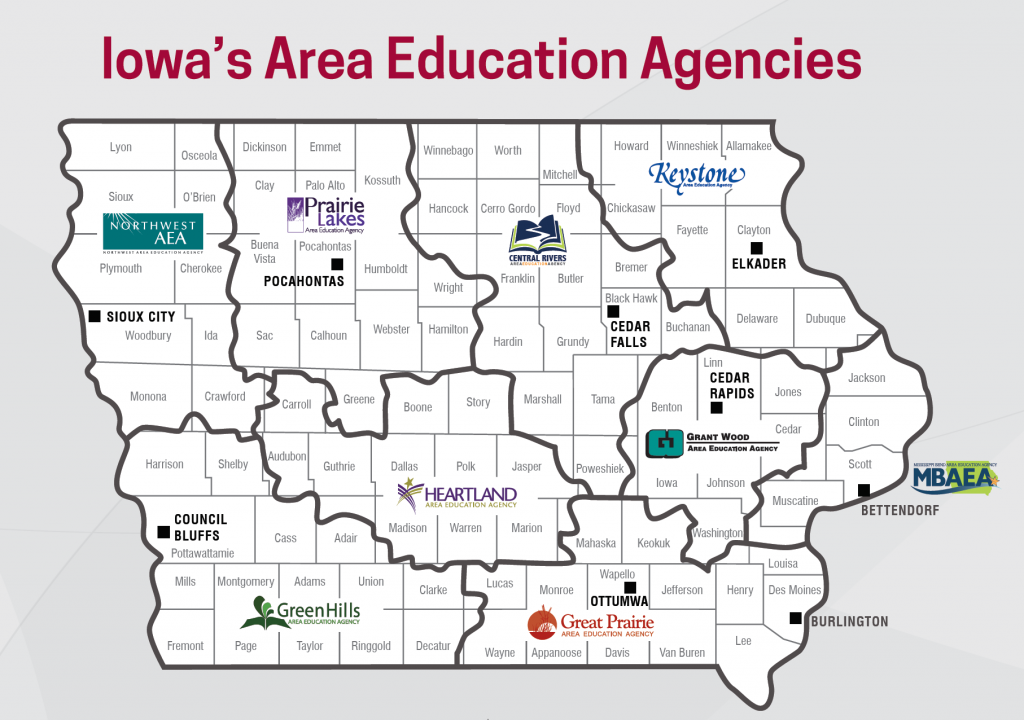Iowa's educational structure dates back to 1858, but the first regional services were not established until 1910 when Iowa school districts numbered over 5,000. In that year, county superintendents were appointed to oversee the schools in each county.
Over the years the number of districts steadily declined. In 1957, the state legislature allowed counties to jointly employ one superintendent to handle the smaller number of districts. Then, in 1965, the legislature approved the merger of two or more counties into joint county school systems. But problems developed under this new arrangement. The availability of services varied greatly from one county or joint-county system to another.
The state legislature responded in 1974 by replacing county systems with 15 area education agencies to provide equity across the state. There are now nine AEAs due to voluntary mergers across the state. Since its inception, Iowa’s AEA system has been widely regarded as one of the finest systems of intermediate services in the country.
To learn more about the AEA system, go to www.iowaaea.org.
Standards for Service
Central Rivers AEA provides many programs and services for children, families, schools and communities, all of which fall under nine state-required standards for service. All of Iowa’s AEAs adhere to these standards for service.
School-Community Planning
School-community planning calls for AEAs to assist schools in determining student needs, developing collaborative community relationships, establishing shared direction, implementing actions to meet goals and reporting progress toward goals.
Professional Development
AEAs anticipate and respond to school and AEA staff needs for professional development. Programs and services support proven educational practices; align with school goals; incorporate adult learning theory; and support improved teaching.
Curriculum, Instruction & Assessment
Curriculum, instruction and assessment services for schools address, at a minimum, reading, language arts, mathematics and science. They include support in establishing standards, collecting and analyzing student achievement and learning climate data, and using this information to improve student learning.
Diverse Learning Needs
AEAs meet diverse learning needs through support services for students with disabilities who require special education, as well as those who are gifted and talented. Services comply with Iowa rules for special education.
Multicultural, Gender-Fair
AEAs provide services that support multicultural, gender-fair practices in school programs. Services assist schools to take actions that ensure all students are free from discrimination; to incorporate instructional strategies and student activities related to responsibilities, rights and respect for diversity; and to provide professional development to prepare school employees to work with diverse learners.
Media Services
Media services support instruction and school needs. They include consultation, research and information services, instructional resources, and production of materials to meet student learning needs. AEAs also support local school media services.
School Technology
School technology services provide schools with technology planning, technical assistance and professional development. Services also support technologies to improve student achievement.
Leadership
AEAs provide leadership services that are based on the Iowa Standards for School Administrators and school needs. Services assist with recruitment, induction, retention and professional development of educational leaders.
Management
AEAs provide schools with management services if requested. These services may be provided on a “fee-for-service” basis and may be provided under cooperative agreements between AEAs.

